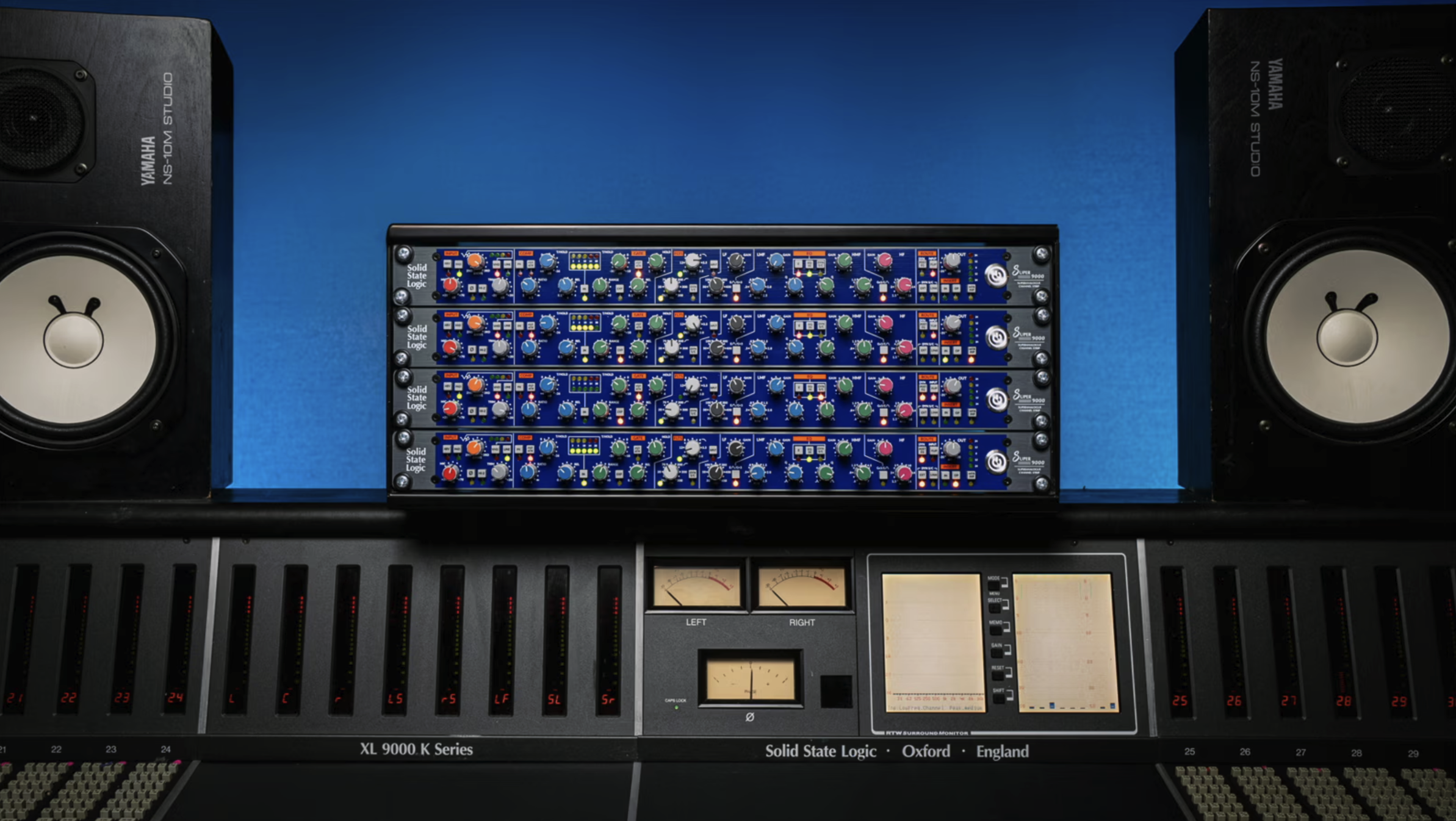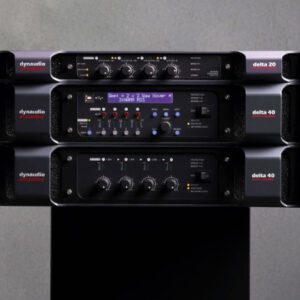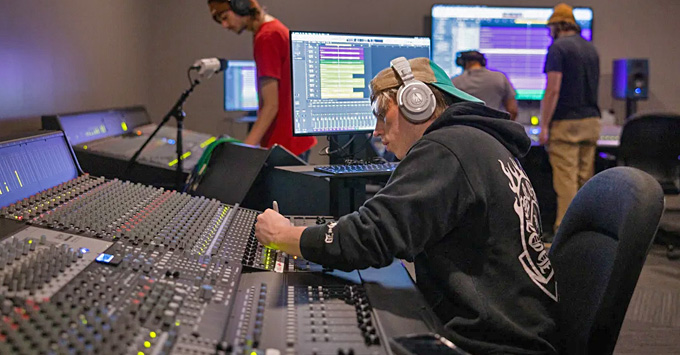
We only recommend products that we use and believe in. When you purchase through links on our site, we may earn an affiliate commission.
New ORIGIN consoles are the latest upgrade to Full Sail’s audio technology, in support of its Recording Arts Program. “After installing the ORIGINs…the students were learning them faster than the previous consoles in those rooms.”
Ever since it was founded in 1979, Full Sail University’s mission has been to prepare students across all disciplines for the technology they are likely to encounter when they find employment in the working world. To that end, Full Sail’s Recording Arts Program recently refreshed its audio technology, installing 10 Solid State Logic ORIGIN 32-channel analogue inline studio consoles and 11 SSL BiG SiX compact mixer/interfaces in a variety of teaching spaces to better reflect today’s typical music production workflows.
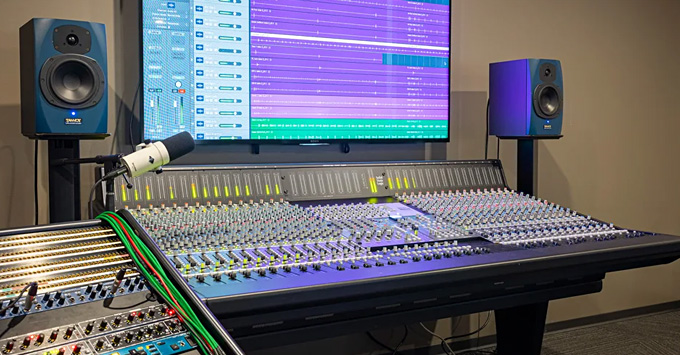
The average age of students passing through Full Sail’s campus is 21, typically a digital-native cohort that has grown up creating on laptops. As a result, Full Sail’s Recording Principles course, the initial audio course for all degree programs within the university’s Audio School, includes an introduction to basic audio signal flow, and provides the first opportunity for most students to work on a large format analogue mixing console. The class is taught in two music production suites in Full Sail’s main studio complex that have both recently been equipped with SSL ORIGIN consoles. The rooms, which each feature a vocal booth, are also outfitted with outboard equipment, microphones, and instruments.
“They learn how to record in those rooms, working as a group of six students with one instructor,” says Darren Schneider, Director of Advanced Session Recording. “The first reports we got back after installing the ORIGINs was that the students were learning them faster than the previous consoles in those rooms.”
Multiple ORIGINS
Seven ORIGIN consoles have also been installed in the A Mix Lab, a large teaching space where students, used to working alone on their laptops, work in pairs on each desk and learn to collaborate. Another ORIGIN has been integrated into an adjoining classroom. The consoles were installed during the winter break. The learning environment further builds on the collaborative spirit of the introductory classes in the two ORIGIN-equipped production suites. “Our intent is to get students to see that other people have strengths and weaknesses and to utilize those strengths when they can,” Schneider explains.
“We want to get them in that collaborative mindset,” confirms Brandon Egerton, Education Director of Audio Arts. “To set them up in pairs like that is a big part of setting the tone for the rest of the degree program. We want to get them out of their comfort zones and open up to the prospect of working and collaborating with others.”
SSL BiG SiX for hybrid workflows
In mid-2023, Full Sail staff integrated 11 new SSL BiG SiX consoles in a complex of small, flexible production rooms, each with a microphone and some essential outboard equipment, dubbed the Mix Palace. The bays were previously configured as analog mix rooms, Schneider reports, and housed SSL AWS 900 consoles. In contrast, the new, compact BiG SiX consoles enable students to create music using current production workflows, providing an interface via each console’s USB connector to a central computer that hosts a massive library of plug-ins, samples, and virtual instruments.
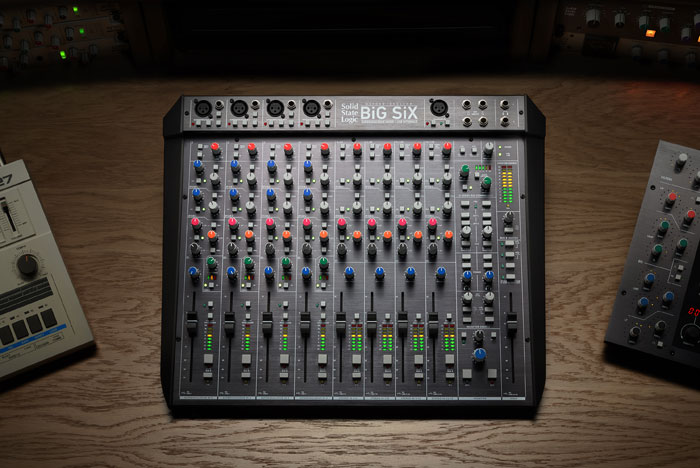
“Students can access the host computer, pull up a sample, play keys over a part that they’ve been working on and record it into Logic on their laptop. Then, they can unplug and go to another bay where an artist is going to sing on the track. They can run a mic and preamp through all the plug-ins, track the vocal and take their laptop away again,” Schneider elaborates. “Today’s students’ creative world exists on their laptop, so we’re trying to find unique ways to make their laptop the center of the studio and have it interface with the rest of the world. And we’re trying to do that campus wide.”
ORIGIN: The ultimate teaching platform
Although the ORIGIN is an inline console, offering two signal paths through each channel module, “We teach it as a split console, with the last eight channels for mic inputs and with Pro Tools returning to the first 24 channels on the large faders,” Schneider reports. “We teach how to sum audio, because every studio on the planet is summing to 16 tracks for headphone boxes, as well as summing out of Pro Tools and how to monitor through the console.”
The ORIGIN gives students an opportunity to get their hands on SSL’s famed 242-style E series equalizer. “Students have seen the SSL brand and they’ve seen this EQ format, whether it’s a G or an E series, emulated by plug-ins,” Schneider says. “When they look at the console, it’s not a foreign object. They feel like they’re a little bit more in control, because they’ve seen it, they’ve touched it, they’ve seen videos on it.”
The seven ORIGINs in the A Mix Lab sit on a Dante network, interfaced via an Avid MTRX to each console and each station’s patchbay, that offers instructors flexible routing options. “From the teacher station we can feed 16 channels of Dante audio to every single console,” Michael Orlowski, Director of Technical Services , elaborates. For example, he says, “If students were assigned a drum mixing task, the instructor can play previously recorded tracks on a loop. This allows each student to independently mix the same drums, and then compare their mixes on the instructor’s station.”
“Everybody’s on headphones,” Schneider adds, “so they can work in tandem or work together. It allows 14 people to work in this space. Every station has a microphone plugged into it, so one person could be talking while the other person is working on signal flow, or vice versa. The instructor can come by and hear what they’re doing. It’s a really cool environment.”
Audio Temple and its SSL Duality
The centerpiece of the Recording Arts Program is the Audio Temple, a large music recording studio featuring a 72-input SSL Duality mixing console. Schneider, who focuses on tracking, works in that room with the likes of Grammy-winning Americana artist Aoife O’Donovan. Students can watch as he works with the musicians, switching between four cameras on a Zoom interface, a system that Orlowski set up during the pandemic. “They can watch my dual Pro Tools rigs while hearing the console output,” Schneider says. “And I have an online instructor who will answer any questions in the chat.”
Full Sail students are accompanied by instructors in the main studios, but the school recently implemented Amplify, an initiative that allows students to schedule extra-curricular time for overdubbing and mixing in the BiG SiX-equipped rooms. Schneider, originally unsure what the response from students would be, was pleasantly surprised to discover that students have been booking about 100 sessions every month. “I’m hoping by the end of the year we can say, ‘We just ran 1,200 sessions through those studios.’”

